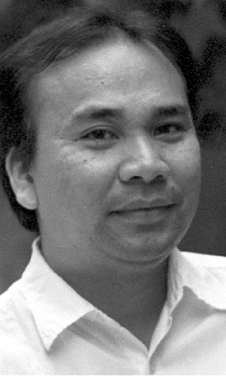
Jobers Bersales
The keen observer will always know that Christianity never really stamped out our ancient pre-colonial beliefs and practices when it’s Good Friday.
Tomorrow, even as the whole of Christendom observes in many ways the death of Jesus Christ, a small number will flock to places considered sacred, even without any Christian basis: caves, springs, and the odd century-old “balete” or “dalakit”/ “dakit” trees (known by the scientific name “Ficus benjamina”) that everyone dread.
Early Spanish missionaries, eager to stamp out all vestiges non-Christian practices, all denounced these people and their practices as evil, regardless of whether they healed or caused death.
Unfortunately, however, the idea of faith healers and of people chosen by God never really disappeared.
Blame the Spanish missionaries in part who, in their desire to stop such “evil” ways, simply replaced our pre-colonial idols with the appropriate saints so that we have a proliferation of fiestas in honor of saints that coincide with the agricultural cycle of planting, weeding and harvesting that, in turn, would have been celebrated in honor of this or that idol.
At the same time, looking for equivalents in language with those of Christian practices, the missionaries used local terms to refer to praying (“pag-ampo”), attending Mass (“pagsimba”), church (“simbahan”), etc. that had pre-existing meanings, not necessarily of the Christian kind.
Later in the Spanish and early American colonial period, such people with self-proclaimed special powers from God took on the more daunting task not just of healing people but of freeing them from the yoke of colonial oppression, of leading them, as did the Biblical Moses, to a promised land ushering a thousand years of freedom and heavenly existence on earth.
Historians and social scientists refer to this phenomenon as millenarianism and the politico-religious movement behind them as millenarian, from the word “millennium” which does not need further explanation.
Enter one Carlos Gerardino of Zaragoza, Aloguinsan.
The year is 1912, in the month of July. Barrio Zaragoza, to the uninformed, was the site of a Pulahan (or Pulajan) uprising in 1904-05. The Pulahan was a widespread millenarian movement that sought freedom from American colonial oppression in many rural parts of the Visayas around 1901 to 1905.
They were called as such due to their penchant for wearing red-colored headbands and attires which were marked with a hodge-podge of incoherent Latin words).
Gerardino’s fame began with faith healing that mixed Christianity with ancient pre-colonial beliefs and practices that eventually led to his self-proclaimed notion to divinity. By the time the Philippine Constabulary got wind of his movement in Zaragoza, he had already about a thousand followers.
What was his secret? Gerardino was believed to turn rattan clubs into rifles. He was known to have a tree whose leaves he could turn into money. He could also turn those same leaves, when boiled, into a kind of pulp or pellet, which would then render bullet proof any person who swallows it.
Although uneducated just like his followers, Gerardino had a gift of speech (presumably in the Cebuano language) who in no time was able to recruit members.
The ultimate task was for all of them to go on their own and quietly enter the capital of Cebu. Once all of them were completely in the city, they would all rush to the “Cuartel de Infanteria” (the constabulary headquarters somewhere near today’s Freedom Park), capture its guns and disable the city’s security forces.
Then, Gerardino would proclaim himself “King of the Philippines,” the divine ruler of the colony which would then be freed from colonialism. Cebu City would be proclaimed the capital of the Kingdom of the New Philippines or something to that effect.
Why they would need the guns of the “cuartel” when Gerardino could turn rattan into rifles remains unexplained.
What is known is that on July 16, 1912, the plot was revealed publicly after a patient undercover work carried out by Major A.J. Robertson who had kept tabs on the movement right from its very beginnings.
Nine ring leaders, including Gerardino himself, were arrested in Zaragoza and, like their original plan, were brought to Cebu, right at the “Cuartel de Infanteria.”
Too bad we lost our chance to become the capital of the new Philippines. But up until today, we do hear of people proclaiming themselves either as Son of God or the Chosen One. In this business of self-proclaimed miracles and messiahs, nothing much has changed, hasn’t it?
Disclaimer: The comments uploaded on this site do not necessarily represent or reflect the views of management and owner of Cebudailynews. We reserve the right to exclude comments that we deem to be inconsistent with our editorial standards.




